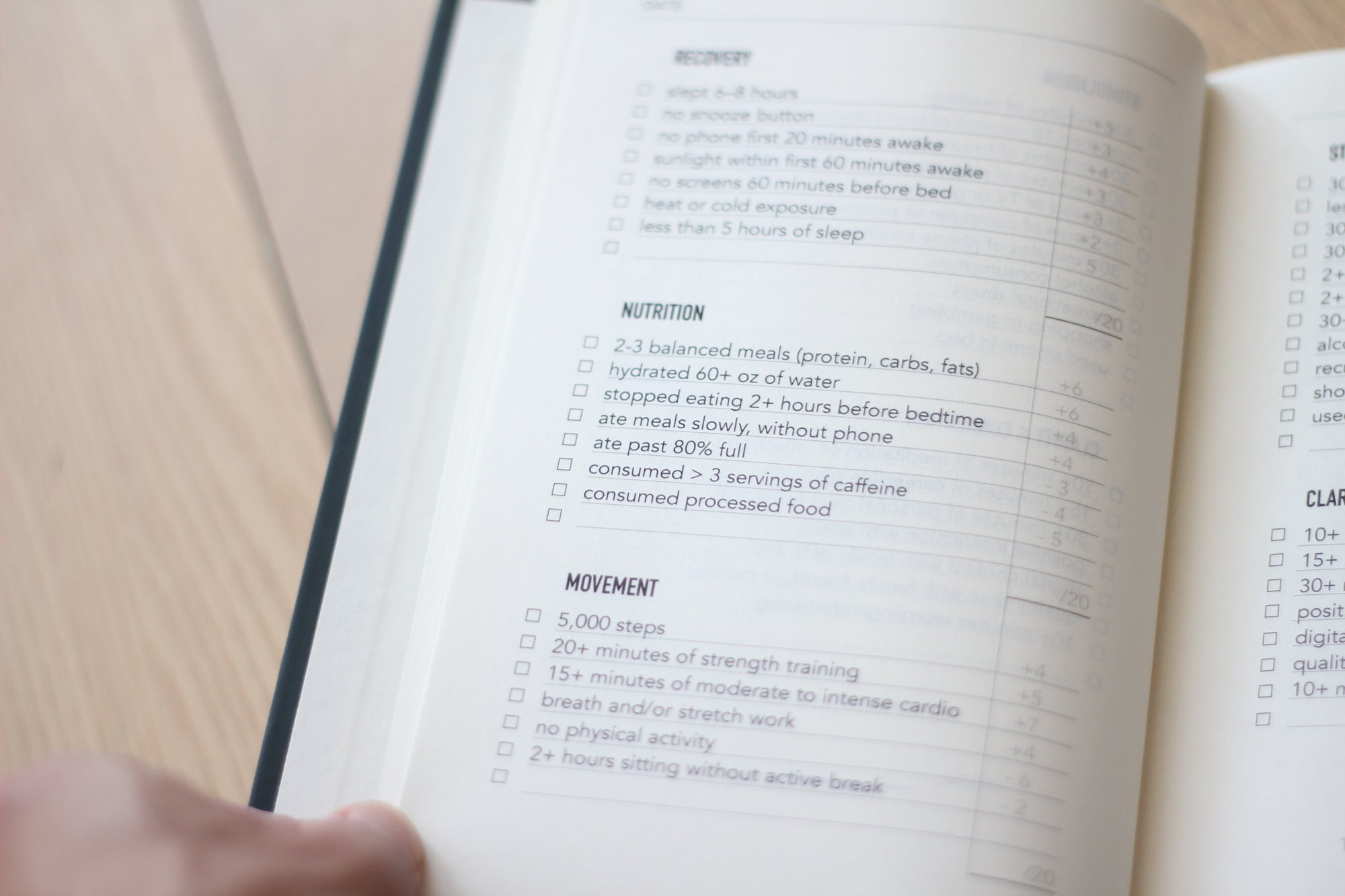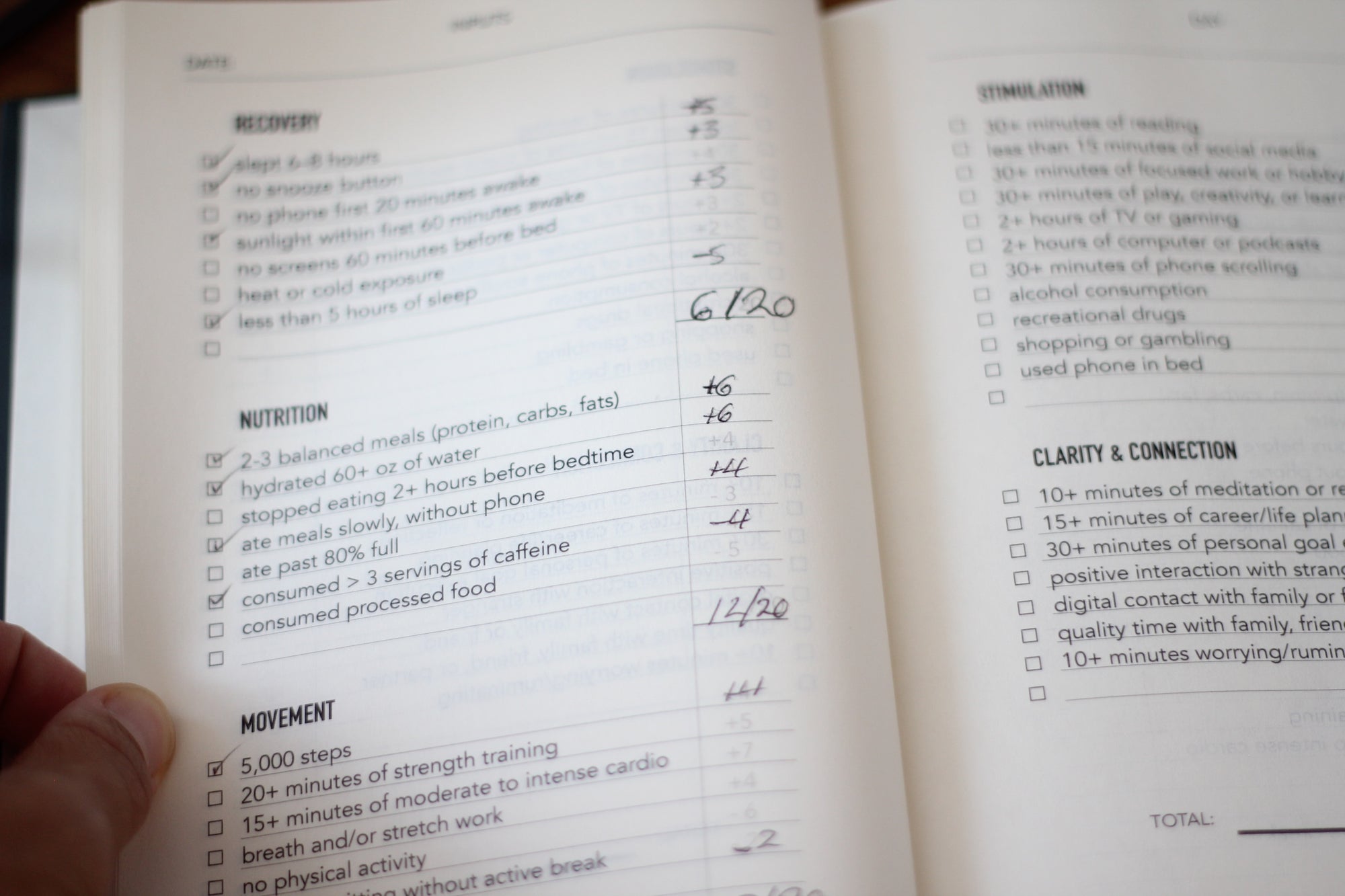Awareness isn’t the same as understanding
Most of us know generally what affect our lives: sleep, nutrition, screen time.
But that knowledge rarely translates into consistent action. Why? Because we don’t have a clear way to see which inputs matter most, or how they’re adding up over time.
That’s where the inputs system comes in. Below is a step by step explanation of how to best use your journal:

Understand your inputs
Each input (aka a behavior) has a numerical score assigned to it based on its impact to your clarity, energy, and cognitive performance. For example:
Slept 6–8 hours: +5
Consumed processed food: –5
No social media all day: +7
10,000+ steps: +5
Your total score for the day is calculated out of 100 (20 points across five categories). Each day, check off behaviors and tally your totals.

Assign values each day
Use predetermined values to quantify habits. This is key.
The values add up to a total possible score of 20 in each daily category.

Review weekly
Every 7 days, you’ll fill out a Weekly Recap and a Pre-Week Planning page.
In the weekly recap, you can log:
Your daily totals
Your weekly average
Your category averages
Which inputs helped the most
On the planning page, you can plan:
Next week's daily goals
Category goals
Priority inputs to improve
Personal goals

Repeat and optimize
The Life Score Journal becomes a living blueprint of how you function best —psychologically, physically, and emotionally.
It’s not a mood log. It’s not a productivity tracker. It’s a system for tracking the architecture of your life.
